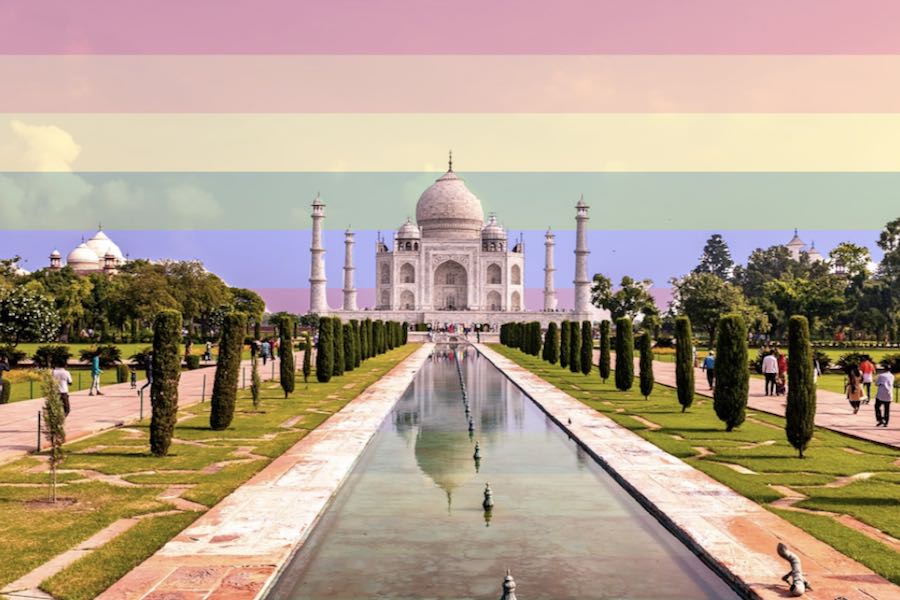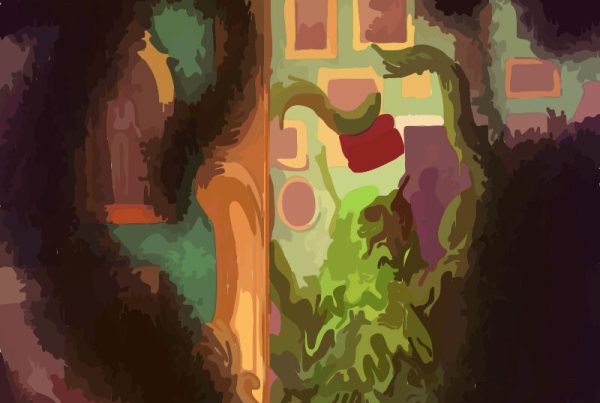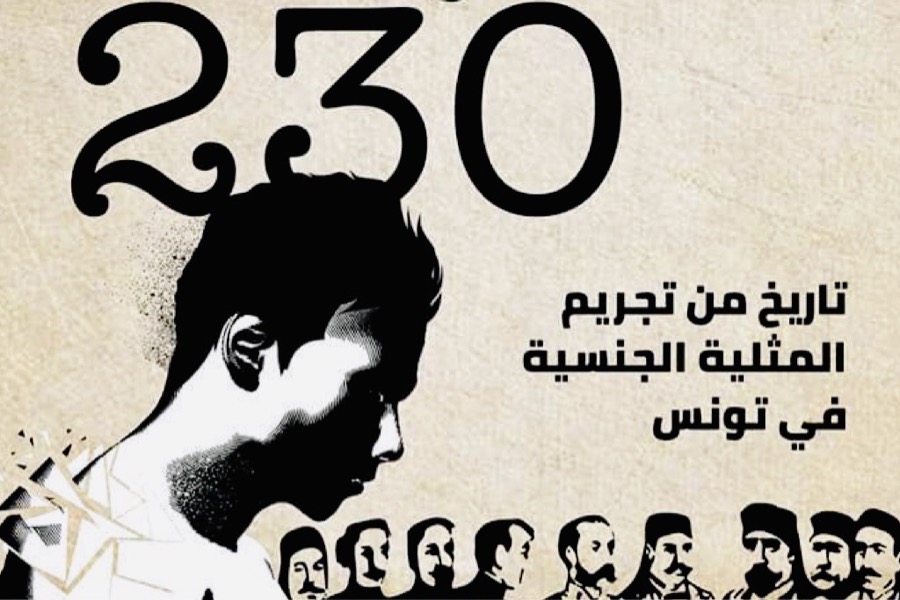It may seem strange to recognize a LGBTQIA literary panorama in India. Yet, this topic has not only been the subject of many contemporary works, but it takes root in the literary tradition and Indian philosophy: the Indian traditional literature is so ripe with sexually ambiguous characters and gender variance that this could suggest the existence of a third gender and the co-existence of many sexual identities.
Hindu Classics
Take the case of Mahabharata, the Indian epic masterpiece: in one of the fantastic episodes of the poem, Arjuna, the main hero, is cursed to spend a year of his life as a eunuch, and is transformed into Brihannala, a music and dance teacher. This is not the only episode where Arjuna undergoes sex-change. In the Padma Purana –one of the texts from the Sanskrit tradition– Arjuna, after inquiring Krishna about the nature of the Gopis (Khrisna’s faithful shepherdesses), embarks on a long and windy journey among meditation, Tantric yoga and prayer until his rebirth in the body of a woman called Arjuni.
Writer Ruth Vanita collected these texts, putting this phenomenon in chronological order. “I have studied in India for all my life,” says she, “but nobody has ever made any reference, at university or at school, to all this queer world. I started wondering how strange this was, so I made research on my own.” As a result of her work, Ruth Vanita published “Same-Sex Love in India” (Palgrave Macmillan, 2000, 396 p.) with Saleem Kidwai, that collects LGBT stories from the Mahavharata to Kama Sutra, up to the 20th century.
In the same vein, Devdutt Patnaik, Indian mythology scholar, published collections such as “The Man who Was a Woman and Other Queer Tales from Hindu Lore” (Routledge, 2001, 196 p.) and “Shikhandi and Other Tales They don’t Tell You” (Zubaan Books, 2015, 192 p).
Nationalism and Censorship
After mentioning the queer world in the ancient Indian literature, here some examples from the public debate on the cusp of the 20th century: although homophobia is not measurable in the Indian tradition, it is still possible to observe diverse currents of opinion regarding various aspects of living. Condemning homosexuality as unnatural and against nature is much more the prerogative of Judaeo-Christian environment, whereas in the Hindu world, it is considered as a mere impure act (not unlike other things).
For this reason, in the context of reworking the national identity that was forming within the new India, literature was subject to severe censorship by the supporters of nationalist movements. What was part of the past was considered decadent and backward. Therefore, in the process of collecting literary works and constituting an “Indian literature”, many texts were despised and censored.
During those years, no real party to support the LGBTQIA community was constituted, nor any sexual liberation movement. Two ways of thinking emerged instead: the first one was openly opposed to addressing any kind of homosexuality or erotic related topic, the second one was in favour of the fact that literature must deal with LGBTQIA-related themes, but only to eradicate such “practices” from the society of that time.
Gays and Bisex in Early 19th
It was thanks to new means of communication like the press and commercial publishing that many censored topics were brought to the public. For instance, Becan Sarma, called “Ugr” (Extreme), had the opportunity to publish eight of his stories which took the collective title of “Caklet” (Chocolate) on Matvala (Bohémien) magazine. Ugr was among those who aimed to denounce homosexuality in order to eradicate it from society, but his stories did not exclusively deal with gay characters: the author distinguished himself from others of his time as one of the first to clearly represent the violent dynamics within the family and child abuse from the victim’s point of view.
The only author who took a stance against the obscurantism of the twentieth century was Suryakant Tripathi Nirala, who wrote a funny autobiographical account, “Kulli Bhat”: it is the story of the scholar Kulli Bhat. Besides courting the author, Bhat also entertains a love affair with a Muslim woman. Suryakant was not the only one dealing with a bisexual character. In 1957, “Ek Sarak Sattavan Galiyam” (A street, fifty-seven lanes) is published, by Kamlesvar: in this short novel, a bisexual truck driver divides his erotic-love living between a traditional Indian dancer and the young truck cleaning man.
The repression of lesbianism
Much smaller was the literature about lesbian and hijra women (people born in a male body, but who feel they belong to a “third sex” and adopt typically feminine gestures and clothing). The former became a minority within the minority. Often condemned by the community to which they belonged, they were also victim of public derision and, in some cases, finger amputation. Lesbianism was represented as a phase, as a behaviour to stop via sexual penetration and consequent pregnancy, or as a sort of rebellion against the patriarchal society. For lesbian women of that time -though this is not so distant from today’s reality- the only solution was double suicide, as it has been widely documented.
It is easy to imagine that most of the stories that dealt with lesbianism were censored. Only one famous Urdu tale, “Lihaaf” (“The blanket”) by Ismat Chughtai, set in a traditional Muslim house, survived the censorship and was muted into a play thanks to the Tricycle group. Ismat Cugtai was prosecuted for the obscenity of his work, but not only did she win the case, she also made his work even more famous. In fact, the short story was not strictly about sexual preferences, but explored the perversions and repressed fantasies in the very respectable environment of the nobility.
Things Have Changed Since the 70s
A growing interest in gay studies flourished in the ’70s which helped to change the obscurantist mood and to shed light on the LGBTQIA scene. In 1978, the first Indian study about homosexuality was published by Shakuntala Devi. It threw a first glimpse of light on the issue and opened the door to increasingly flourishing research of queer anthropology. In the 90s, a slow but promising rebirth of the LGBT narrative literature can be observed: finally free from a mix of Victorian values and nationalistic norms, a number of authors developed a new approach based on the equality and the natural condition of homosexual and non-homosexual relationships.
Braham Sing, author of “Bombay Swastika” (Om Books International, 2017, 400 p.), -a thriller between Nazi Berlin and Bombay- says in an interview: “Mine is not a book on homosexuality, but a book in which a homosexual character intervenes in the most absolute normality, as part of history, as part of the world. I grew up with a gay brother and for me, relating to a different sexuality is like dealing with a glaring and always existent part of society.”
The author adds a personal reflection on how much the Hindus ignore most of the sacred and ancient texts: they know some stories, but they have never actually read them. The same applies to the Muslims: “Colonial and Puritan attitudes and Victorian notions about sin and guilt are still dominant. In fact, those Indians who read Urdu rarely read eighteenth or nineteenth century literature in detail. If they did, they would find a large majority of Muslim poets who openly write about cross-sex, homosexual love and homoerotic attraction.”
* * *
In conclusion, this brief historical excursus across the LGBTQI literature in India can lead to a reflection that does not differ much from the situation of many other nations, including Italy. If everyone had to read and inquire about history, literature and – why not? – on religious texts, we are sure there would be a lot to think about.
Bibliography:
– Consolaro, Alessandra. La Prosa nella Cultura Letteraria Hindi dell’India Coloniale e Postcoloniale. Torino: Libreria Stampatori Torino, 2011.
– Vanita, Ruth and Saleem Kidwai. Same-Sex Love in India: Readings from Literature and History. England: Palgrave, 2001.
– Devi, Shakuntala. The World of Homosexuals. New Delhi: Bell Books/Vikas Publishing House, 1978.
Dhevan
translation by Christopher Mitoli
©2017 Il Grande Colibrì
Erratum: in a previous version of the text, Ismat Chughtai was wrongly identified with male pronouns.
Read also:




